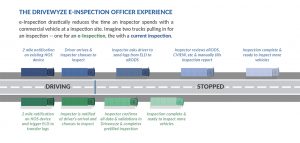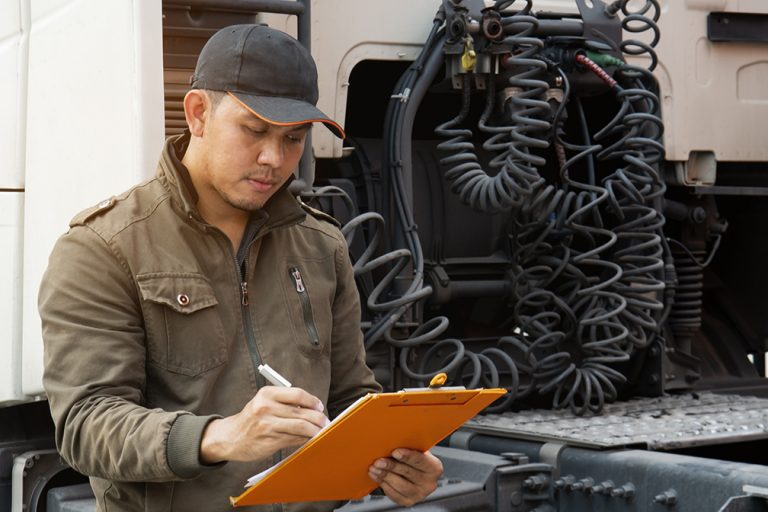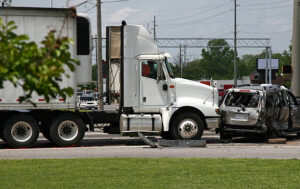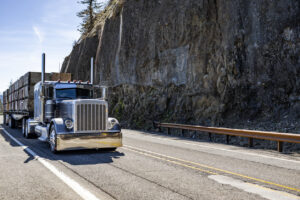DALLAS — In an effort to improve speed, efficiency and accuracy at weigh stations, Drivewyze has launched open enrollment for automated electronic inspections (e-inspections) at weigh stations in Maryland, Maine and Virginia. Software activation is free for Drivewyze PreClear customers and available through participating Drivewyze ELD partners.
“This is the beginning of streamlining inspections, which is a major win for fleets and drivers, plus for those in law enforcement,” said Brian Heath, CEO and president of Drivewyze. “For those using our weigh station bypass service, it means in-station inspections no longer require drivers to manually submit their HOS files and inspectors can complete inspections in a matter of minutes versus the traditional 30- to 60-minute processing time at weigh stations. Our system automates traditional manual processes, and everyone benefits. It’s a major step forward in the modernization of roadside inspections.”
According to Heath, Drivewyze e-inspections are an industry first and represent the power of an innovative ecosystem of ELD providers, public partnerships with leading enforcement agencies, and the desire of carriers to eliminate delays and improve their safety scores. While e-inspections are currently available in only three states, other states are expected to offer the service as their software is upgraded or enhanced to process e-inspections.
“We’ve done testing and trials with major fleets and state inspection sites to prove the accuracy and efficiency of e-inspections,” Heath said. “We’ve found that a clean Level 3 inspection can be reduced from a 30-minute detention to mere minutes. That allows the driver and fleet to improve or maintain their safety score while logging more miles. It also frees the inspection officer from time-consuming manual data entry so they can concentrate efforts on trucks that truly do need inspecting.”
Currently, drivers undergoing an in-station inspection must go through manual steps on an ELD to transfer their logs to the inspection site’s computer, including entering the officer’s inspector code.
“This not only takes time; manual entry leads to input errors,” said Heath. “If the driver, for example, mistypes the officer’s inspector code and the logs can’t be transferred, it’s an HOS violation. Likewise, if a driver isn’t familiar with the ELD and doesn’t know how to transfer logs or locate the driver instruction sheet, the carrier can be dinged on their safety score. With the advent of e-inspections to automate HOS data transfer, problems sending logs to inspections sites are no longer an issue.”

Here’s how an e-inspection works:
- The ELD automatically sends the driver’s logs to the roadside inspection site when an e-Inspection is started, eliminating manual transfer steps entirely.
- An officer conducting the inspection can view vehicle, carrier and driver-level information and has their inspection report form automatically pre-filled at the start of their inspection.
- The inspector evaluates the vehicle and driver, and decides if any further validation or investigation is required without having to manually search multiple systems to verify the Carrier, Vehicle, and Driver credentials.
- When the officer is satisfied, the inspection can be completed at the touch of a button, saving significant time and improving the accuracy of the inspection.
“Drivers and law enforcement have tough jobs,” said Daniel Patterson, director of safety at Western Express, which participated in e-inspection trials. “Being able to efficiently transfer data to make inspections more seamless and a positive experience for both parties is very important to us. E-inspections allow us to achieve the goal of gathering more data and increasing the safety of our roadways. We are very excited for this program to expand throughout more states and increase the effectiveness of our partnership both with Drivewyze and with law enforcement agencies.”
The Trucker News Staff produces engaging content for not only TheTrucker.com, but also The Trucker Newspaper, which has been serving the trucking industry for more than 30 years. With a focus on drivers, the Trucker News Staff aims to provide relevant, objective content pertaining to the trucking segment of the transportation industry. The Trucker News Staff is based in Little Rock, Arkansas.








